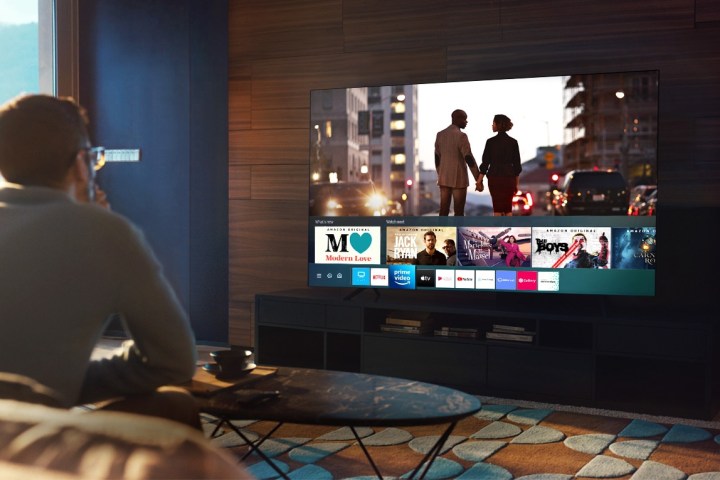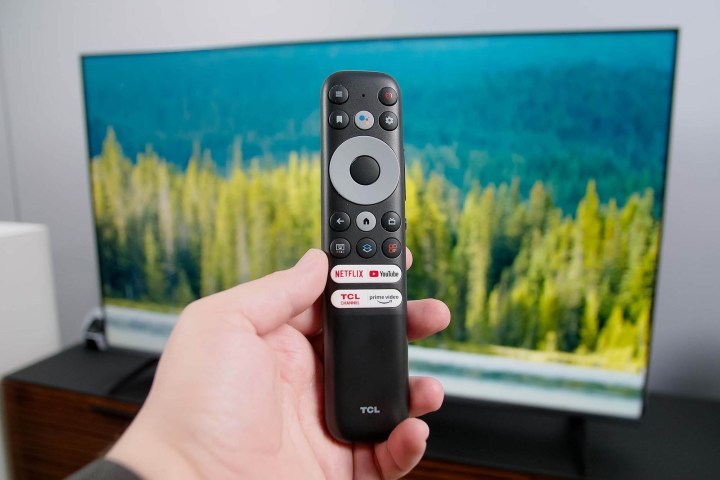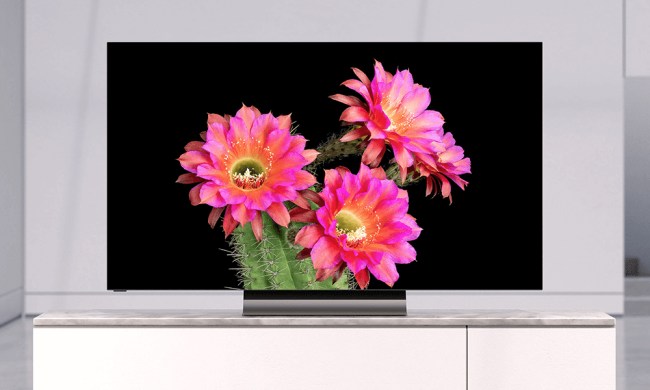Smart TVs are everywhere. In fact, you’d be hard-pressed to find a TV on a store shelf these days that doesn’t do clever things like play movies and TV shows from the latest streaming services while you ask it to do so with (gasp!) your voice through an intelligent voice assistant. Widgets and apps open up possibilities like gaming, weather, video calling, and smart home features that would make your old TV fear for the curb.
But what makes a TV smart, and why should you care? Is it as simple as an internet connection and an operating system? If it’s just a more direct route to streamers like Netflix and Disney+, then is that better or worse than my trusty Apple TV or Roku set-top box? Who makes smart TVs, and does it matter which I choose? We decided to weigh in on the matter.

What makes a TV smart?
Your old TV was a loner, isolated from the world beyond its antenna, cable box, or A/V source like a DVD player for all its content needs. The major feature separating smart TVs and not-so-smart TVs is an internet connection, which opens it to a world of possibilities. Nearly all modern smart TVs come equipped with either an Ethernet port, built-in Wi-Fi, or both, and with the latest sets being powered by a range of sophisticated and powerful operating systems, processors, and software, current TVs are more like smartphones or computers than ever.
What can I do with a smart TV?
Watch TV
While today’s TVs are indeed smart, the primary use for a smart TV is still, you know, watching TV. But the way that’s done now is vastly different from the past. With the rise to prominence of streaming services such as Netflix, Hulu, HBO Max, Amazon Prime Video, Disney+, and Apple TV+, most of our movies and shows are streamed over the internet to our TVs either through set-top boxes or streaming sticks, like the Apple TV, Roku Ultra, and Amazon Fire TV Stick. However, over the years, most smart TVs made by everyone from Samsung, LG, and Sony to TCL, Hisense, and Vizio now come with these streaming service apps built right in. There are some advantages to this, including the fact that you don’t have to shell out for a separate device, and there’s no need for additional HDMI and power cables, network connections, or setups — the TV setup process is streamlined and simplified.
However, it’s worth considering that unlike smartphones or computers (and even set-top boxes), TVs don’t focus as much on processing power, meaning that even with regular software and firmware updates, over time your TV will get slower, laggy in its navigation, and show a decline in performance as image and audio quality continues to improve. Your TV’s processor can’t be replaced or upgraded, but an aging set-top box or streaming stick can. Both options have their advantages, and many people use a combination of the two.
Smart home, voice assistants, and more
For many, the TV is a central meeting point for the home — we arrange our furniture around them and mount them on the wall as a focal point of the decor. But they’ve never been as functional as they are today, beyond just staring at them for entertainment. With today’s smart TVs, you can do all sorts of things, like controlling and accessing all your smart home devices such as lights, robot vacuums, security cameras, and thermostats; streaming music and podcasts; making video calls for work (with some TVs from Sony, TCL, and Amazon offering support for Google Duo and even Zoom); working out (with apps such as Peloton installed); and more.
Most smart TVs also come with Google Assistant or Alexa smart assistants built-in, allowing you to control much of this with your voice (more on that below). Add to that the ability to cast apps and content from smartphones and tablets, mirroring their screens to a smart TV, and the possibilities are kind of endless.

Smart TV operating systems
Even though all smart TVs are built with the same goal in mind — helping you access your favorite content without a middleman (in this case, a set-top box or streaming stick) — they don’t all work the same way. In general, each manufacturer uses a different operating system with its own individual features and quirks, with two of the biggest being LG’s WebOS and Samsung’s Tizen, which are nimble, smart, and offer all kinds of features in and of themselves. Most TV makers, including Samsung, LG, TCL, Hisense, and Sony, however, also offer their TVs in models that run well-known operating systems like Roku, Android TV, and its successor, Google TV, built-in. These operating systems allow for a broad range of functionality and features, as well as compatibility with devices such as smartphones, and provide access to a wider range of apps and content. Which is the best TV operating system is up to you to decide.
Voice search
For the most part, smart TV interfaces are designed to be simple and easy enough for anyone to use without training or tutorials (after all, lots of people check out display TVs before buying). Still, sometimes you just don’t want to hunt and peck — and that’s where voice search comes in.
As a fairly common feature in newer smart TV remotes, voice search turns navigation into an easy, one-click task, no matter what you’re looking for. But be aware that certain platforms — like Roku — offer more robust search tools than others, and remote microphones aren’t always great at understanding your voice, so patience is important.
But what kind of commands can they handle? Here’s a brief look:
- “Play the latest episode of Lucifer on Netflix.”
- “Open Amazon Prime Video.”
- “Switch over to HDMI 3.”
- “Mute the volume.”
- “Turn off after this episode of Friends.”
Some higher-end models come with Amazon Alexa or Google Assistant built-in, which offer access to a much larger knowledge database. Using one of them, you’ll not only be able to tell the television what to do but also to search the internet for answers to questions and scour through your connected accounts for contextual information, such as calendar events.
If your TV doesn’t come with a voice remote in the box, you may also be able to access voice search via a smartphone app or by hooking up an Amazon Echo or Google Home.
Privacy of user data
A good rule of thumb with all web-connected devices is that any user data you enter is always somewhat at risk. Smart TVs are no exception. When subscribing and buying, we recommend keeping your purchases within your TV’s app store. TV web browsers are generally clunky tools that hackers can easily manipulate. If you need to buy treats off Amazon, relegate the transaction to your home computer or phone.
Alternatives
Not all smart TVs are created equal. Perhaps the TV you like doesn’t have the best operating system, or maybe you just don’t have the cash to pony up hundreds for a shiny new screen. If that sounds all too true, set-top boxes and streaming sticks are great alternatives that offer nearly all the functionality of a high-end smart TV at an affordable price. Roku’s products (such as the Streaming Stick 4K) do a great job of turning existing dumb TVs into smart ones, as do Google’s Chromecasts and Amazon’s Fire TV devices. New models of these devices are always being churned out, and their operating systems frequently get updates that add new features. Plus, they’re relatively inexpensive, making them an appealing alternative.


